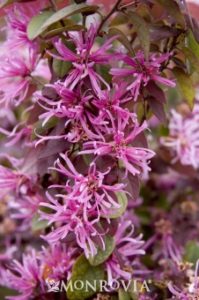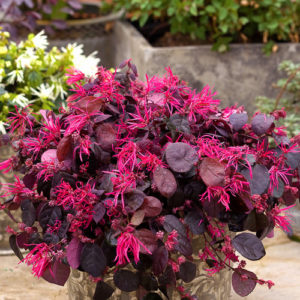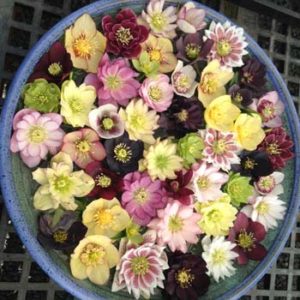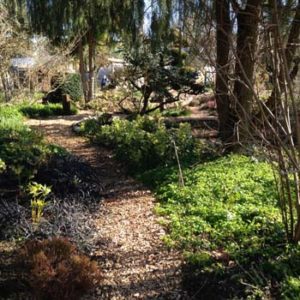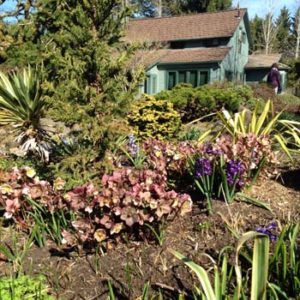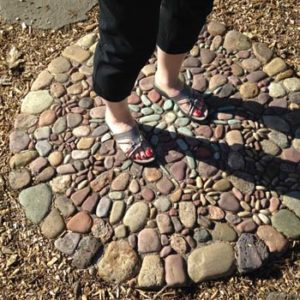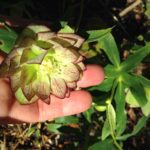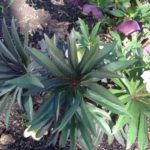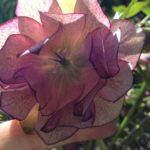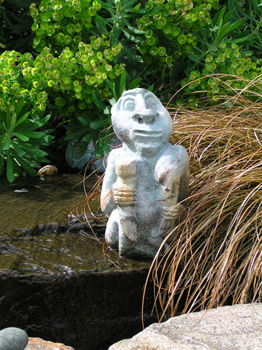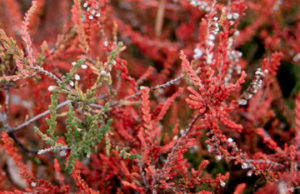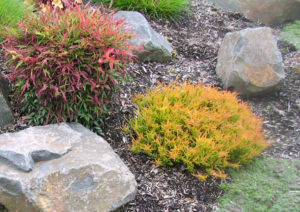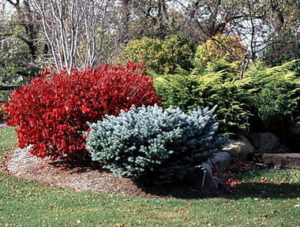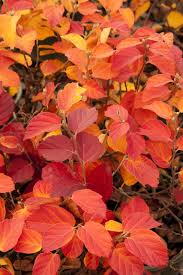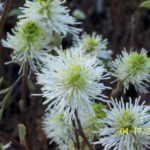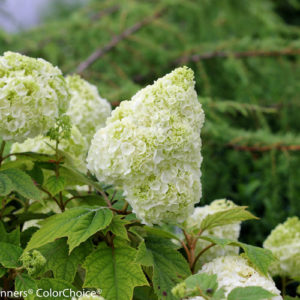Landscaping The Swim Spa That Took Over The Backyard
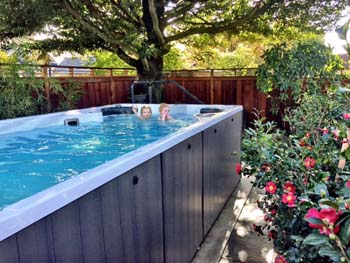
Rachael and her family like to swim even in December when this photo was taken with the blooming Camellia Sasanqua ‘Yuletide’.
Rachael and her family like to swim. They have twin toddlers who have been swimming since they were three months old. Seeing them playing like baby otters is adorable, even cuter than puppies which is saying something!
Existing Conditions
Prior to the swim spa their backyard was a pleasant place with a tiny lawn, a covered patio, and some easy-care plantings. They also had a beloved gorgeous 36-inch diameter trunk California myrtle tree that shaded half the yard. The new swim spa dominated the back yard and the mud from the construction process made it a poor place for toddlers to play. This new situation was beyond heading to the plant nursery to select a few new plants. They needed a designer to re-design the backyard, create solutions for privacy and manipulate the space to maximize every inch.
Landscape Design in a Day
Rachael and I talked on the phone and we were a great fit. We scheduled a Landscape Design in a Day, my collaborative design process, and they started preparing their base drawing and working through my landscape survey questions. I was really looking forward to this one but it was going to be so tricky! We met at their home one cool spring day to create the design together.
Privacy
The new 10′ x 20′ swim spa sits four plus feet above the ground making the swimmers very visible to neighbors. They wanted privacy for themselves and in case their neighbors didn’t really want to watch them swim, for the neighbors too.

Camellia Sasanqua ‘Yuletide’ helps screen swim spa.
The privacy issues for small properties with close neighbors is often tricky. On one side of the property it was easy. The California myrtle and a couple of mature rhododendron would solve most of the problems on that side. Three things would need to happen. We needed to stop pruning back the tops of the old rhodies, they would need to be treated each year for lace bug and be irrigated. For the last privacy hole on this side we would fill it with a New Zealand Box Tree. I will prune it myself the first few times, Azara Microphylla to help it fit into the difficult spot that is right next to the gate. It is needed to screen out a neighbor’s window that is on the first floor. It’s important to use a small tree that won’t get too big for this spot and this tree was the perfect solution.
Bamboo Screen
The back-property line was difficult because the swim spa was right next to the fence. We had only a few feet for a privacy planting and it needed to grow to 10 feet tall and very narrow in order to fit. I used my faithful clumping bamboo up in planters. This variety of clumping bamboo, Fargesia Robusta ‘Campbell’, stands straight up so it will not weep over and interfere with the swimming. Most varieties of clumping bamboo have too much weeping and arching shape to them and don’t work well for tiny landscapes. The planters were advantageous for many reasons. 1st we would not need to dig deep and disturb the root system of the beloved California Myrtle tree. 2nd we could use an ideal soil mixture in the planters so the bamboo would thrive. They will grow in our local clay top soil but will do much better in a soil mix that drains well. 3rd by putting them in planters they would be taller from the beginning.
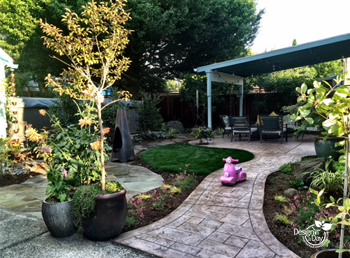
We utilized the existing walkway which fit the client’s cottage garden style and her budget.
The privacy for the driveway side was the hardest. We needed to screen out a second story window at the neighbors and had no planting area to do it with. We decided to use an arbor. It fit beautifully and we were all enthusiastic about it. However, when all the numbers came in, the arbor wasn’t a practical choice. When I visited recently to see how things were growing along we talked about a more affordable solution.
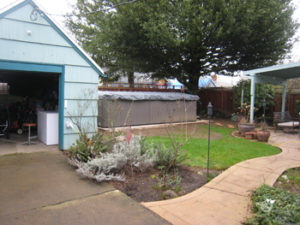
Before – The new swim spa dominated the back yard.
Two small trees in very large pots placed strategically will be part of a future phase. In a small yard situation like this tiny backyard we can’t afford to leave the driveway to the garage read as a driveway. They didn’t use the small garage for parking a car. Using furniture and pots we made this area a sunny sitting area.
Rachael says
“Hi Carol, Nice to hear from you. Yes we would love for you to come by and take a look. All the Camellia Sasanqua are blooming and they are beautiful! The bamboo is already growing and we love our little backyard oasis. Thank you for referring us to Scott Schultze, Tellurian Gardens. He and his crew did a great job installing the new landscape.”


